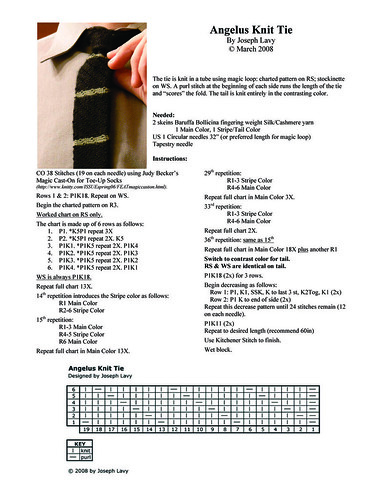I've learned some great things about knitting from my
co-Raveling sister:
1. How to knit socks.
2. How to work magic loop.
3. How to knit socks toe-up using magic loop and Judy's magic cast on.
4. Addi Turbos rock for magic loop.
5. KnitPicks Options rock even more.
This tip from her is my current
favorite:
6. How to keep two-at-once sock projects portable, neat, and tangle-free.
 Recognize my Monkeys?
Recognize my Monkeys?
I'm about to start the toe decreases!Instructions:
1. Get a sturdy, clear-plastic, zip-top bag large enough for two hand-pull skeins of sock yarn. The one pictured here came from
Weaving Works, one of the many fine LYSs here in Seattle. I imagine you can find these bags any number of places.
2. Using a hole-puncher, put two holes — evenly spaced — in the bottom. If it's a round- or flat-bottom bag, you'll need to make a little fold where you want to punch the hole.
3. Put something on or in the bag to differentiate one side from the other (i.e. a sticker on one of the sides or a picture of your pattern on the inside). I like to use the manufacturer's case for my needles, if I'm using Addis. For awhile, though, the price sticker on the bag did the trick.
4. Put your 2 skeins of yarn inside the bag so the "marker" is on top, pull each end through its respective hole, and zip the bag.
When you're working magic loop, you'll always know when you're at the beginning of a round based on whether the marked side is up or whether the two strands of yarn leading to the bag run parallel or are crossed.
This technique can be a real lifesaver if you're working an allover stockinette pattern for your socks. Everything stays tidy, and when you're done for the day, you can pack up the knitting into the bag as well. Just be sure not to zip it closed over top of your yarn!

If you don't want to spend the $1.63 for a bag like this, with a real zipper, use a standard zip-lock storage bag. You'll want at least the quart size, not only because it will hold more but also because the plastic is a little more durable.
The set-up above works really great if you're not reinforcing the heels and toes. But when you add the two additional yarns for reinforcing, it can get messy.
I tried two solutions, both of which failed. First, I put the reinforcing threads inside the bag using the same holes as for the normal yarn. But the fibers didn't pull evenly, and I ended up with all sorts of rolling. Next, I left the reinforcing thread outside the bag. But this way, the yarn cards (or miniscule skeins) flop and roll all over the place. Completely destroys your chances of knitting on the bus!
The solution?
Espresso!
 Seriously.
Seriously.I solved the problem quite by accident. I wanted to have two sock projects going at once and needed a second bag. I remembered the stack of fantastic little bags my favorite espresso beans come in, which I had been saving for a good way to re-use.
Let's face it — for a true coffee connoisseur and knitting enthusiast, it's a yummylicious match made in heaven!
 WARNING!
WARNING! Shameless commercial plug:
Espresso Vivace is, IMO, the finest roaster in Seattle. We get their decaf (i.e. let me sleep) and vita (i.e. wake me up) beans, and we go through about a half pound of each
every week. Needless to say, the bags pile up. I just can't bring myself to get rid of them, even through recycling, because they're so nice. I'd already been using them to store remnants from knitting projects. I realized they were great candidates for sock project bags.

What makes these bags special — and, thus, provided my lightbulb moment — is the pressed "selvage" around the edges. I like the bottom construction, too, because they stand upright, but that's beside the point. When I punched for the two holes (in the side rather than the bottom of these bags), I made not two openings but four: two stacked sets of two.

So now I load the center-pull skeins of yarn into the bag, with the skein top facing the punched hole, and I pull the working thread through the upper hole. I wind the reinforcing thread off the cards into little center-pull skeins (often I just divide one card's worth in half to do both) and load these in front of the main yarn, pulling the tails through the bottom set of holes.
The two threads don't tangle around each other, and the reinforcing thread doesn't bound freely across the room or bus!

You're right: I could have had this brainstorm, eventually, without the coffee. But I didn't. It took the beans.
Speaking of which, Vivace does sell its beans online. You can get them (and thus your own nifty bags)
here. Believe me: It's worth every penny!
Just make sure to wash the bags well before putting your yarn in them. You'll want to remove all the coffee oils and smell. (Well, if you're like me, you don't mind a little lingering coffee aroma.) I've had the best success turning mine inside-out and running them through the dishwasher on the top rack.
Not interested in buying the coffee but like the bags? I've got a few extras. Pop me an email with your address, and I'll send one.




























































